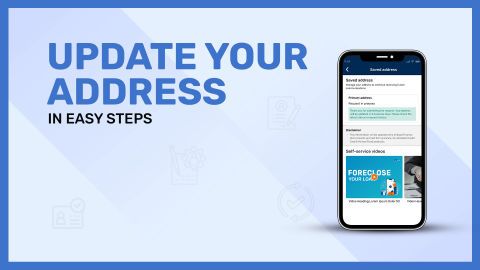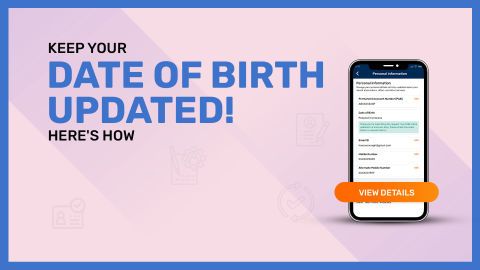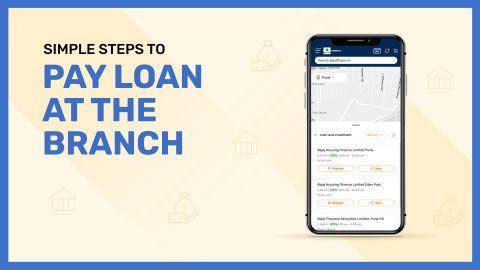Understanding overdraft against fixed deposits (FDs)
An overdraft against fixed deposits (FDs) is a secured credit facility offered by banks wherein depositors can borrow money by using their fixed deposit as collateral. Rather than liquidating the FD before its maturity—which may result in penalties and loss of interest earnings—account holders can conveniently access funds through an overdraft facility. This option is particularly useful in times of short-term financial need or cash flow constraints.Banks usually allow an overdraft limit of up to 90% to 95% of the FD’s principal amount, depending on internal policies and customer profile. The key advantage lies in the lower interest rate, which is typically 1% to 2% higher than the FD’s interest rate, making it significantly cheaper than unsecured personal loans or credit card debt. Moreover, the FD continues to accrue interest during the overdraft period, offering simultaneous benefits of investment growth and liquidity.
The repayment structure is highly flexible. Borrowers can withdraw funds as needed, repay in part or full at their convenience, and re-borrow within the sanctioned limit throughout the FD’s tenure. Interest is charged only on the utilised amount and for the exact number of days it remains outstanding, helping borrowers save on interest costs.
Obtaining an overdraft against an FD is a hassle-free process, especially for existing customers. Since the deposit acts as collateral, there is no need for a credit score check or guarantor. Documentation is minimal, and some banks even allow the process to be completed online through internet or mobile banking platforms.
However, depositors must exercise caution, as frauds related to overdrafts against FDs have been reported. These may involve forged authorisations, impersonation, unauthorised linkages of FDs, or collusion by insiders. To safeguard against such risks, customers should monitor their account activity regularly, avoid sharing FD details, and immediately report any discrepancies to their bank.
Top of Form
Bottom of Form
Common types of overdraft against FD frauds
Overdrafts against fixed deposits (FDs) are considered a secure form of credit due to the backing of a tangible asset. However, this security is sometimes exploited by fraudsters through sophisticated schemes and unauthorised manipulation. Below are the common types of frauds associated with overdrafts against FDs:- Impersonation fraudFraudsters use forged identity documents or steal personal information to impersonate genuine FD holders. They then apply for an overdraft using the victim’s fixed deposit, withdrawing funds without the actual depositor’s knowledge.
- Forged authorisation or signaturesIn some cases, internal staff or external parties forge signatures or fake authorisation letters to link the FD to an overdraft account. The genuine FD holder remains unaware until a deduction or lien is noticed.
- Unauthorised FD pledgingThis type of fraud occurs when someone pledges another person’s FD—often using hacked account details or physical document theft—to secure an overdraft facility. Banks without stringent verification systems may fall victim to such malpractice.
- Internal collusion with bank staffSome fraud cases involve collusion between bank employees and external fraudsters. Staff may bypass verification protocols to facilitate unauthorised overdraft creation or fund disbursement.
- FD cloning or duplicationIn this scam, fraudsters create a fake FD certificate or digitally alter a genuine one to reflect inflated or fake values. These are used to secure overdraft facilities under false pretences, leading to untraceable losses.
- Digital banking misuseWith the rise of internet and mobile banking, cybercriminals exploit vulnerabilities or phishing techniques to gain access to FD-linked accounts. Once inside, they may link FDs to new overdraft accounts and siphon off funds quickly.
- Fake call centre scamsFraudsters posing as bank representatives convince account holders to reveal FD details under the pretext of account upgrades, interest bonuses, or verification. This information is then used to manipulate the overdraft facility.
- Third-party agent fraudsSome consumers approach unauthorised financial agents for loans against FDs. These agents may misuse the FD details or charge hidden fees while facilitating overdraft arrangements through dubious channels.
- Negligence in dormant accountsFraudsters often target dormant FDs where the account holder is inactive or deceased. Without timely monitoring or nomination, these accounts become susceptible to unauthorised overdraft linkages.
- Overdraft misuse in joint accountsIn jointly held FDs, one party may misuse the facility by availing an overdraft without proper consent or notification to the co-holder, especially when terms of operation are not clearly defined.
Step-by-step guide to filing an overdraft against FD fraud complaint
Discovering that your fixed deposit has been misused for an unauthorised overdraft can be a distressing experience. However, acting promptly and systematically can help you contain the damage and recover your funds. This guide outlines a step-by-step approach to filing a complaint in case of an overdraft against FD fraud.Step 1: Identify and confirm the fraud
Begin by reviewing your bank statement and fixed deposit records. Signs of fraud may include unauthorised lien markings, unexpected overdraft account creation, or unexplained fund withdrawals. If you receive SMS alerts, emails, or app notifications about an overdraft you did not apply for, treat them seriously and verify with your bank immediately.
Step 2: Collect all supporting documents
Before approaching authorities, collect and organise all relevant documents to support your claim. These include:
FD account details and certificates
Bank statements reflecting suspicious transactions
Overdraft account summaries (if available)
Communication records (SMS, emails, or call logs)
Identification proof
Screenshots of any online transactions or discrepancies
Having this documentation ready will ensure that your complaint is processed efficiently.
Step 3: Notify your bank immediately
Visit your branch in person and report the fraud to the bank’s branch manager or designated grievance officer. Submit a written complaint detailing the fraudulent overdraft, how you discovered it, and the financial impact. Include all supporting documents and request an official acknowledgment receipt.
Ask the bank to:
Block the overdraft facility linked to your FD
Freeze suspicious accounts or transactions
Initiate an internal investigation into the matter
In many cases, banks may be able to reverse the transaction if reported promptly.
Step 4: Escalate the complaint within the bank
If the branch fails to take timely or appropriate action, escalate your complaint to the bank’s Zonal or Nodal Officer, whose details are usually available on the bank’s official website. Most banks have a structured escalation matrix and a dedicated grievance redressal mechanism in place.
You can also lodge a complaint via the bank’s customer care helpline, email support, or online grievance portal. Retain the complaint reference number for tracking purposes.
Step 5: File a complaint with the Banking Ombudsman
If your bank does not respond satisfactorily within 30 days, you may approach the Reserve Bank of India’s Banking Ombudsman. Visit https://cms.rbi.org.in and submit your complaint under the “Loan and Advances – Other Issues” category. Provide all correspondence and evidence collected so far.
The Ombudsman has the authority to direct the bank to reverse unauthorised transactions, compensate for losses, and penalise non-compliance.
Step 6: Report the matter to cybercrime authorities (if applicable)
If the fraud involves identity theft, phishing, or digital manipulation, file a complaint at the National Cyber Crime Reporting Portal https://cybercrime.gov.in. Select “Report Other Cyber Crime” and provide detailed information, including screenshots and transaction logs. Your case will be forwarded to the appropriate cyber cell for further action.
Step 7: Lodge a police complaint or FIR
For significant monetary losses or where criminal intent is evident, file a First Information Report (FIR) at your local police station. Carry printed copies of all relevant documents and correspondence. Clearly explain how the fraud occurred and request investigation under sections related to cheating, forgery, and cybercrime.
Step 8: Monitor and follow up
Track the status of your complaint regularly through your bank, Ombudsman portal, and police channels. Maintain a file of all responses and reference numbers for easy access.
By acting swiftly, maintaining thorough documentation, and following official channels, victims of overdraft against FD fraud can increase the likelihood of a favourable resolution and reduce potential financial damage.
Top of Form
Bottom of Form
Legal rights of consumers in overdraft against FD frauds
Consumers who become victims of overdraft against fixed deposit (FD) frauds are protected under various legal and regulatory frameworks in India. These provisions are designed to safeguard deposit holders from unauthorised use of their financial instruments, provide a path to resolution, and hold responsible parties accountable. Understanding these rights is critical in pursuing justice and preventing future financial harm.Protection under the Consumer Protection Act, 2019
The Consumer Protection Act, 2019 offers a broad framework to address grievances related to financial services. Banks, as service providers, are liable under this Act if they engage in unfair trade practices, provide deficient services, or fail to ensure the safety of customer accounts. Victims of overdraft fraud linked to FDs can approach the District, State, or National Consumer Disputes Redressal Commissions, depending on the monetary value of the loss. These forums have the authority to direct banks to refund the amount, pay compensation for mental harassment, and issue corrective measures.
Safeguards under the Reserve Bank of India (RBI) guidelines
The RBI has issued comprehensive guidelines on customer protection in digital banking and unauthorised transactions. As per these rules, customers are entitled to zero liability if the fraud is reported within a stipulated time and the bank is found at fault due to negligence in securing systems or failing to act promptly. Consumers also have the right to raise disputes, seek chargebacks, and escalate unresolved complaints to the Banking Ombudsman, a quasi-judicial authority that can order redressal, compensation, and penalties against the bank.
Legal recourse under the Indian Penal Code (IPC) and IT Act, 2000
In cases involving identity theft, forged documents, phishing, or collusion, victims can lodge a First Information Report (FIR) under applicable sections of the Indian Penal Code, such as Section 420 (cheating) and Section 468 (forgery). Additionally, if the fraud involved digital manipulation, the Information Technology Act, 2000 applies. This Act addresses offences such as data theft, hacking, and unauthorised access to digital systems.
Right to transparency and grievance redressal
Banks are legally bound to provide clear terms, secure procedures, and accessible grievance channels. Consumers have the right to receive full disclosure about overdraft terms, track FD lien markings, and be notified of any linked transactions. Failure to comply with these obligations makes the bank accountable.
By leveraging these legal rights, consumers can assert their position, initiate formal proceedings, and pursue restitution for losses arising from overdraft against FD frauds.
How to report overdraft against FD frauds to authorities?
Reporting overdraft against fixed deposit (FD) frauds to the appropriate authorities is crucial to prevent further misuse, recover funds, and ensure legal accountability. A prompt and structured approach enhances the chances of timely redressal. Here is a detailed guide on how consumers can report such incidents effectively.Step 1: Inform your bank immediately
As soon as you detect any unauthorised overdraft linked to your FD, contact your bank without delay. Visit the branch in person and submit a written complaint detailing the incident, including account numbers, transaction references, and suspected fraud activity. Request the bank to:
Block or freeze the overdraft facility
Conduct an internal investigation
Provide a written acknowledgment of your complaint
Banks are obliged to initiate prompt action and provide status updates under their customer service obligations.
Step 2: Escalate to higher banking authorities
If the branch response is unsatisfactory or delayed, escalate the complaint to the bank’s Nodal or Principal Grievance Officer. Contact details are usually available on the bank’s website. Submit your grievance via email or the bank’s official complaint portal and retain the reference number for tracking.
Step 3: Lodge a complaint with the Banking Ombudsman
If the bank fails to resolve your issue within 30 days, you can file a complaint with the Reserve Bank of India’s Banking Ombudsman through https://cms.rbi.org.in. Attach all supporting documents, including bank responses and identification proof.
Step 4: Report to the cybercrime authorities
If digital fraud, phishing, or identity theft is involved, report the matter to the National Cyber Crime Reporting Portal at https://cybercrime.gov.in. Select the appropriate category and submit your complaint with relevant evidence.
Taking swift action and escalating through the correct channels ensures your complaint is taken seriously and facilitates quicker resolution.
Top of Form
Bottom of Form
Preventive measures to avoid overdraft against FD frauds
While overdraft facilities against fixed deposits (FDs) offer liquidity and convenience, they also present an opportunity for misuse if not monitored carefully. To protect yourself from potential frauds related to FD-linked overdrafts, it is important to adopt the following preventive measures:- Do not share FD details publicly or over callsRefrain from disclosing your fixed deposit number, account details, or maturity information to anyone over the phone, email, or unverified platforms. Fraudsters often use such data for impersonation or manipulation.
- Activate SMS and email alertsEnable transaction alerts for all linked accounts and services. Notifications help detect any unauthorised overdraft activation or fund movement in real time.
- Monitor FD and linked account activity regularlyPeriodically check your bank statements, FD records, and loan account summaries through net banking or branch visits to ensure no suspicious activity has occurred.
- Use secure and official banking channelsAlways initiate FD and overdraft services through official bank portals or in-person visits. Avoid third-party intermediaries or unauthorised financial agents who may exploit your data.
- Set clear operating instructions for joint accountsIn the case of jointly held FDs, define operation terms clearly, such as requiring signatures from all holders for availing overdraft facilities. This helps prevent misuse by one party.
- Nominate trusted individuals on your FD accountAdding a nominee ensures that your deposit is protected in the event of your absence or death, reducing the risk of fraudulent activity in dormant accounts.
- Secure login credentials and enable two-factor authenticationKeep your internet and mobile banking credentials confidential. Activate two-factor authentication to strengthen account security.
- Verify lien markings and overdraft linkagesRoutinely check if your FD has been marked with any lien or if a loan or overdraft has been linked without your consent. Report anomalies to the bank immediately.
- Avoid storing FD documents on public or shared devicesSensitive documents should be kept secure and not stored on unsecured cloud platforms or shared computers.
- Educate family members and senior citizensHelp less tech-savvy individuals understand the risks and signs of such frauds to prevent them from becoming easy targets.
Impact of overdraft against FD frauds on credit scores and financial health
Overdraft against fixed deposit (FD) frauds, though seemingly limited to the misuse of a specific financial product, can have far-reaching consequences on an individual’s overall financial health and creditworthiness. These impacts often go unnoticed until substantial damage has occurred. Understanding the long-term repercussions is essential for protecting one's financial profile and ensuring swift corrective measures.Negative effect on credit scores
Even though overdraft against FD is a secured facility, any misuse—especially when the account holder is unaware—can lead to unintended defaults. If the fraudster draws funds through the overdraft and fails to repay, the account may reflect non-performing asset (NPA) status. This delinquency is reported to credit bureaus such as CIBIL, Experian, or Equifax, resulting in a significant drop in the victim’s credit score.A damaged credit report can hinder the consumer’s ability to obtain future loans, credit cards, or mortgages, as lenders assess credit history when evaluating risk. The longer the fraudulent debt remains unresolved, the greater the negative impact on creditworthiness.
Financial liabilities and legal complications
Victims may unknowingly accrue interest obligations on unauthorised overdraft usage. Unless the fraud is identified and rectified promptly, banks may continue to charge interest on the outstanding amount, thereby creating an unplanned financial burden.In more complex cases, if the issue is not reported on time, the victim could face legal notices or recovery proceedings. This is particularly alarming when the fraud is assumed to be a legitimate liability by the bank’s collections department. Without evidence or proactive communication, reversing the legal status of such debt can become challenging.
Emotional and administrative toll
Apart from financial strain, dealing with overdraft fraud can cause stress and anxiety, especially when there is a lack of clarity or delayed redressal. Victims may spend months coordinating with bank officials, cybercrime cells, and consumer forums to prove their innocence and restore their financial standing.Remedial steps to protect credit health
Once fraud is confirmed, it is crucial to:- Notify the bank and ensure the overdraft is marked as unauthorised
- Request the bank to correct credit bureau reporting
- Obtain a No Dues Certificate once the issue is resolved
- Monitor your credit score regularly to track changes and improvements
Conclusion
Overdraft against FD frauds present a serious threat to the financial security and credibility of individuals, often leading to unauthorised liabilities, damaged credit scores, and legal complications. While this facility offers convenient liquidity backed by one’s own deposit, it can be misused through impersonation, forgery, or internal collusion if adequate precautions are not taken.Understanding how the frauds occur, recognising early warning signs, and being aware of your legal rights are essential in safeguarding your financial interests. Timely reporting to banks, cybercrime units, and regulatory bodies like the Banking Ombudsman can help in achieving resolution and recovering any lost funds. Moreover, staying vigilant through regular account monitoring, enabling alerts, and using secure digital practices greatly reduces vulnerability.
Ultimately, prevention remains the strongest defence. By adopting informed banking habits and leveraging available legal protections, consumers can not only prevent overdraft against FD frauds but also ensure that their financial assets remain safe and uncompromised.




